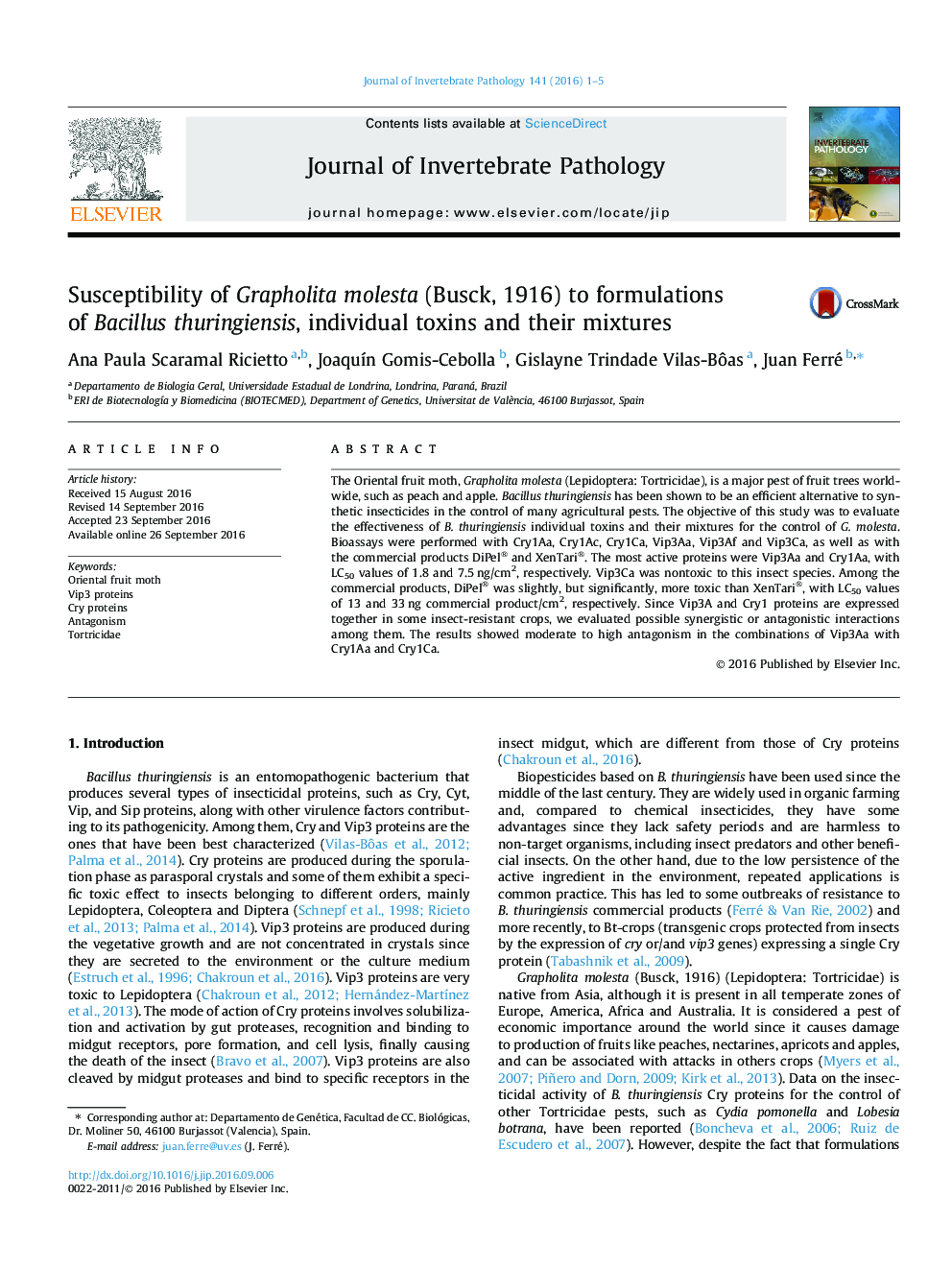| Article ID | Journal | Published Year | Pages | File Type |
|---|---|---|---|---|
| 4557467 | Journal of Invertebrate Pathology | 2016 | 5 Pages |
•Grapholita molesta is highly susceptible to Bt products, Cry1A and Vip3A proteins.•The combination of Vip3Aa with either Cry1Aa or Cry1Ca was antagonistic.•The degree of antagonism increased with the proportion of Vip3Aa in the mixture.
The Oriental fruit moth, Grapholita molesta (Lepidoptera: Tortricidae), is a major pest of fruit trees worldwide, such as peach and apple. Bacillus thuringiensis has been shown to be an efficient alternative to synthetic insecticides in the control of many agricultural pests. The objective of this study was to evaluate the effectiveness of B. thuringiensis individual toxins and their mixtures for the control of G. molesta. Bioassays were performed with Cry1Aa, Cry1Ac, Cry1Ca, Vip3Aa, Vip3Af and Vip3Ca, as well as with the commercial products DiPel® and XenTari®. The most active proteins were Vip3Aa and Cry1Aa, with LC50 values of 1.8 and 7.5 ng/cm2, respectively. Vip3Ca was nontoxic to this insect species. Among the commercial products, DiPel® was slightly, but significantly, more toxic than XenTari®, with LC50 values of 13 and 33 ng commercial product/cm2, respectively. Since Vip3A and Cry1 proteins are expressed together in some insect-resistant crops, we evaluated possible synergistic or antagonistic interactions among them. The results showed moderate to high antagonism in the combinations of Vip3Aa with Cry1Aa and Cry1Ca.
Graphical abstractFigure optionsDownload full-size imageDownload as PowerPoint slide
